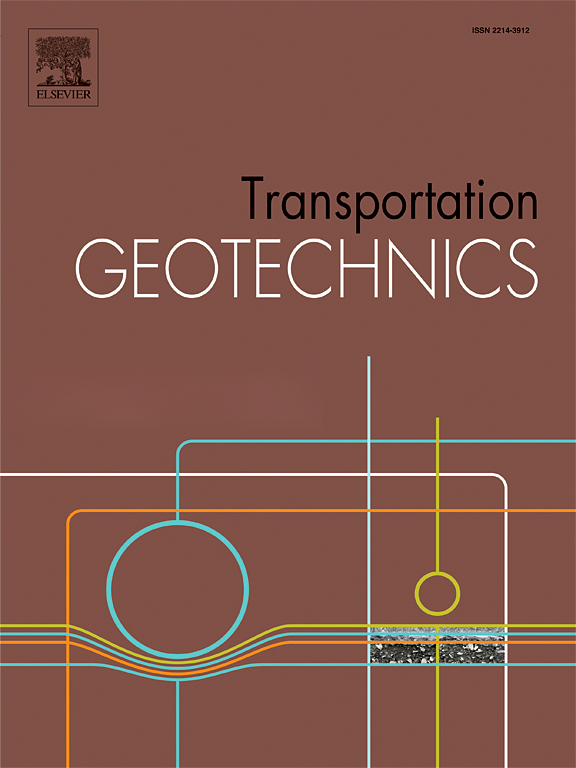Application of a combined arching model in the load transfer platform of rigid inclusion system with raft through FEM evaluation
IF 4.9
2区 工程技术
Q1 ENGINEERING, CIVIL
引用次数: 0
Abstract
This study introduces a novel combined arching model for the load transfer platform (LTP) layer beneath a rigid raft within a rigid inclusion (RI) system. RI systems with different pile configurations and different LTP layer thicknesses (HLTP) were simulated via a 3-dimensional finite element method. Within the central unit cell of each case, vertical stress, horizontal stress, and lateral earth pressure coefficients were compared. The inflection points of horizontal stress were determined as the upper boundary of soil arch. Additionally, nonuniform stress distribution on the LTP layer is analyzed, revealing concentration above inclusion heads. The study identifies the relative spacing (HLTP / (S – D), where S = inclusion spacing and D = inclusion diameter) as a significant parameter capturing stress variation. This study concludes by proposing a “combined arching” approach for soil arching under a rigid raft, which considers a multi-arch mechanism for uniformly distributed stress and vertical slip surface for concentrated stress.
求助全文
约1分钟内获得全文
求助全文
来源期刊

Transportation Geotechnics
Social Sciences-Transportation
CiteScore
8.10
自引率
11.30%
发文量
194
审稿时长
51 days
期刊介绍:
Transportation Geotechnics is a journal dedicated to publishing high-quality, theoretical, and applied papers that cover all facets of geotechnics for transportation infrastructure such as roads, highways, railways, underground railways, airfields, and waterways. The journal places a special emphasis on case studies that present original work relevant to the sustainable construction of transportation infrastructure. The scope of topics it addresses includes the geotechnical properties of geomaterials for sustainable and rational design and construction, the behavior of compacted and stabilized geomaterials, the use of geosynthetics and reinforcement in constructed layers and interlayers, ground improvement and slope stability for transportation infrastructures, compaction technology and management, maintenance technology, the impact of climate, embankments for highways and high-speed trains, transition zones, dredging, underwater geotechnics for infrastructure purposes, and the modeling of multi-layered structures and supporting ground under dynamic and repeated loads.
 求助内容:
求助内容: 应助结果提醒方式:
应助结果提醒方式:


